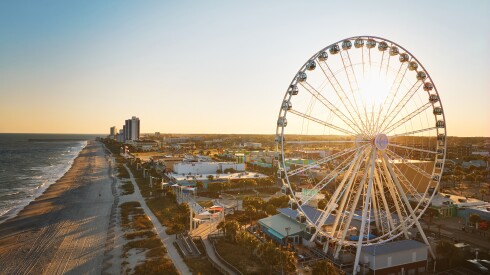It’s a salty morning in a surging cove and I’m tallying: All those years, oblivious to the bounty underfoot. The legion meals I’ve trampled. The countless appetizers I’ve mowed down.
But now is no time to wallow. The novice coastal forager, blasted by pale Oregon sun and buffeted by frigid Pacific Ocean breakers, passes through remorse en route to liberation. There are gooseneck barnacles to pry from rock faces, sesuvium portulacastrum to pluck from sand, matted sheaves of slimy sea lettuce to yank from a bright green bed.
A couple of beachcombers amble by, admiring a ghostly sea stack. I, too, once came to the coast to marvel. Today I’m here to filch.
Foraging for wild food has become almost de rigueur in certain foodie circles, the next step when you’ve wrung all thrill from the farmers’ market. In Portland’s flourishing food scene, you can’t swing a chanterelle without hitting a cook who sources from the woods outside town, or, for that matter, the woods in town. But coastal foraging is another story: less-charted terrain, sparser terrain, at least at first blush. The number of chefs in this country regularly procuring their ingredients at the ocean is tiny; the number in Portland can be counted on one hand.
I’m here with three of the fingers, mucking around outside the misty seaside town of Lincoln City. Will Preisch and Joel Stocks come to the coast on Wednesdays to gather ingredients. Joining them today is chef and fellow picker David Padberg, along with a former colleague, Matthew Domingo, and me, a person who once waited tables poorly for a winter. They’ve promised to show me the ropes and then cook up a massive feast, assuming we scavenge enough in the hours ahead.

Growing as long as 15 feet from its holdfast on the ocean floor, egregia menziesli, or feather boa kelp, is more beautiful than edible.
Photo by Kyle Johnson
Coastal foraging might be a fledgling pursuit, the prey just wispy little bits—but its aims are grand. Via ziplock baggies and mesh sacks, it’s an attempt to know a pretty swath of planet more intimately, to slow the otherwise hectic chef life, and to atone a little for civilization’s generally shallow, not to mention abusive, relationship with its pantry. You take a bracing half step toward the wild and it’s a half step away from everything else. Plus, you know, the ingredients are free.
I didn’t say enough about the frigid water earlier. It’s daggery cold—one hit and you instantly miss telemarketers and pop-up ads and the rest of your boring-though-warm life. But the ache subsides. As we scramble over the slick rocks, poking here and yanking there, something shifts. The inland world, busy and abstracted, slips away. The steady, hypnotic wash of waves takes its place. Historically, I’ve devoted minimal thought to coastal vegetation. Suddenly sea peas and sea plantain—generic, overlookable weeds—feel urgent.
“Once you start picking, there’s something that makes it hard to quit,” Preisch tells me, stepping over a cartoonishly chubby orange starfish. “I’m always saying, ‘Ten more minutes’ or ‘Let’s stop at one more place.’ ”
At certain misty times, on certain desolate stretches of coastline, this segment of the planet is super fucking creepy.
Preisch has a thoughtful and long and vaguely Amish face, an enviable blond beard, and an even more enviable grasp of wild edibles. “People tell me I’m now on their zombie apocalypse team,” he says. Ditto for Stocks, who’s currently plundering a tide pool for kombu, the edible kelp used in dashi. If civilization does collapse in the next few days, I’ll be with the well-fed survivor kings.
Our liberating army spends the morning working a pry bar against jagged mussel colonies and digging feeble weeds from the base of towering, spruce-topped cliffs. The feeling is at once illicit and virtuous. We’re skulking around shoplifting barnacles and so forth from nature’s 7-Eleven. But we’re also using what others neglect, eating local, and opting out of a problematic commercial food system.
Indeed, from the outside, the enterprise might seem like just another diverting culinary adventure—and at some level I suppose it is. But for its practitioners, foraging represents nothing less than a shot across the bow of Big Agriculture, if a sprig of sandwort can be called a shot across anything. To hear any half-awake chef talk these days is to absorb an earful on the deceits and corruptions endemic to the commercial produce world, the poultry world, the seafood world. Nobody thinks a sack of sea veggies will change this. But in the briny, twiggy simplicity of today’s haul lurks a teaspoon of resistance.
David Padberg is central to today’s tiny revolt. Square-jawed and flip-flopped, he’s a chef ’s chef in the Portland restaurant firmament; Preisch and Stocks worked under him years ago at the restaurant Park Kitchen, as did Domingo. Tonight he’ll be cooking for us, including whatever we can scavenge—a midweek feast in a house we’ve rented for the sole purposes of consuming good food.
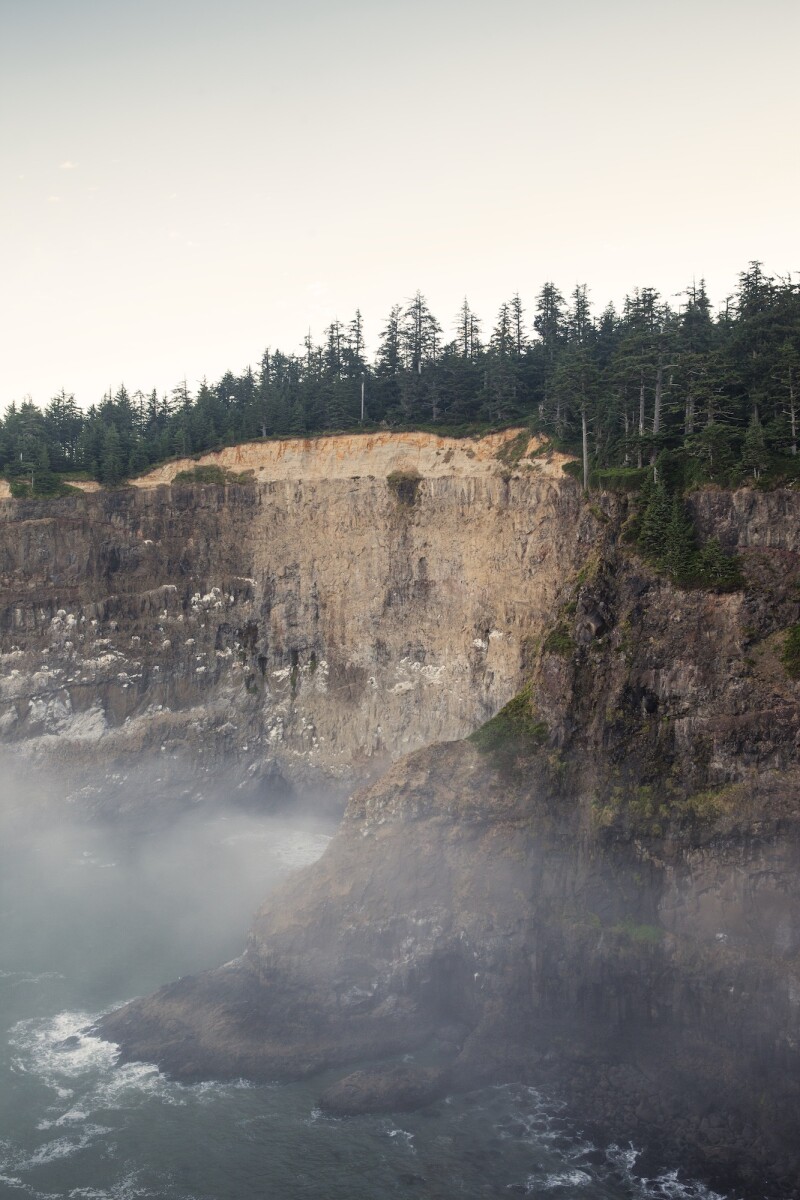
The Oregon coast looks daunting from the Cape Meares Lighthouse bluffs, but the waters hold vast promise for adventurous foragers.
Photo by Kyle Johnson
The coast sufficiently raided, we climb into cars and bomb up past the Coast Range mountains, spruce boughs cathedraling over our ribbon of U.S. Highway 101. I hope to offend no one by saying that at certain misty times, on certain desolate stretches of coastline, this segment of the planet is super fucking creepy. One minute you’re driving along, the next you’ve vanished in a swirl of fog that’s barreling across the road like tumbleweed. It spirals into the trees and just sort of settles there, leaving you to picture generations of backwoods Oregonians swallowed entirely by the mist.
But today has turned bright and nice, plus explosively colorful. On the left, the un-trammeled riotous red of a crimson clover field. On the right, the wild, Big Bird yellow of Scotch broom popping off the banks of the Salmon River. (Not edible! Just pretty.) The odd parked RV registers not as an eyesore but as simple good thinking. If you could live on the rim of the seashore’s salad bowl, wouldn’t you
Before dinner, Preisch, Stocks, and I stop at Netarts Bay, the more-than-2,300-acre estuary below Tillamook. It’s low tide, and a stiff wind ripples the long grasses along the edge of the bay’s vast, exposed floor. In the distance, a handful of harbor seals lie sausagelike in the sun, contemplating existence. We venture in, Preisch and Stocks stepping around like cranes, in search of a few more interesting flavors: the bright pineyness of sea purslane, the intense cilantro taste of sea plantain, the refreshing, sour crunch of sea spinach, with its memorable arrow-shaped leaf. Oh, and Turkish bath towel, which I can only assume tastes similar to Armenian bath towel.
“It’s the fantasy of a more adventurous life,” he tells me. “With coastal foraging, there’s this basic element of the unknown.”
Padberg has already peeled off for the cabin we’ve rented. His feast will feed not just us but a broader community of like-minded food producers, all coaxing high-end ingredients from the area in one way or another. Husband-and-wife Portlanders Jennifer Bloeser and Markus Mead added farming to their resumes a few years back, and now, with the company Frog Eyes Wasabi, find themselves one of the very few commercial growers of the temperamental rhizome in this country. (That ubiquitous stuff alongside your California roll? Horseradish and green dye.) Up the road from Frog Eyes is Ben Jacobsen, the only salt celebrity I can claim to have encountered. A couple years back, the tall, freckled ex-software executive became the first soul to harvest salt commercially from the Oregon coast since Lewis and Clark, and his celebrated Jacobsen Salt Co. crystals are now found in such restaurants as the French Laundry and the Spotted Pig. Finally, we’ll be joined by Damian Magista and Ryan LeBrun of Bee Local, a Portland operation gathering and selling honey from different neighborhoods around town, each with a distinct flavor profile.
By the time I get around to jotting the words “flavor profile” in my pad late that afternoon, it’s a scrawl. In our cabin, a tall, glassy box peering out at Netarts Bay, sake-fueled mayhem is under way. The assorted guests filter in and gather around Padberg’s adopted kitchen, pouring this and that. The next eight hours area a ragged conversational romp through gooseneck barnacles and salmon collar and razor clam shooters, through swilling Magista’s homemade salted mead and grousing about honey laundering, through Padberg’s delicate tule salmon cooked on cedar planking (hello, familiar-looking sea lettuce), through a 17-year-old Japanese whiskey and Magista’s lubricated attempt to sell Preisch on adding a skunk cabbage roll to his culinary repertoire.
When food people drink, they make jokes about skunk cabbage.
It’s after midnight when I finally drift off, and Preisch, Stocks, and Padberg are pulling some spot prawns from the fridge for a late snack. The following morning we pop ibuprofen and pile into cars for Portland, where somehow there’s a bigger evening to prepare for.
It wasn’t just the coastal foraging phenomenon that brought me up to Oregon this week. I’d wanted to meet Preisch and Stocks, who came to this stage in their careers via rough terrain. Their regular trips to the ocean celebrate not just nature’s cornucopia but their own good fortune, which wasn’t always so.
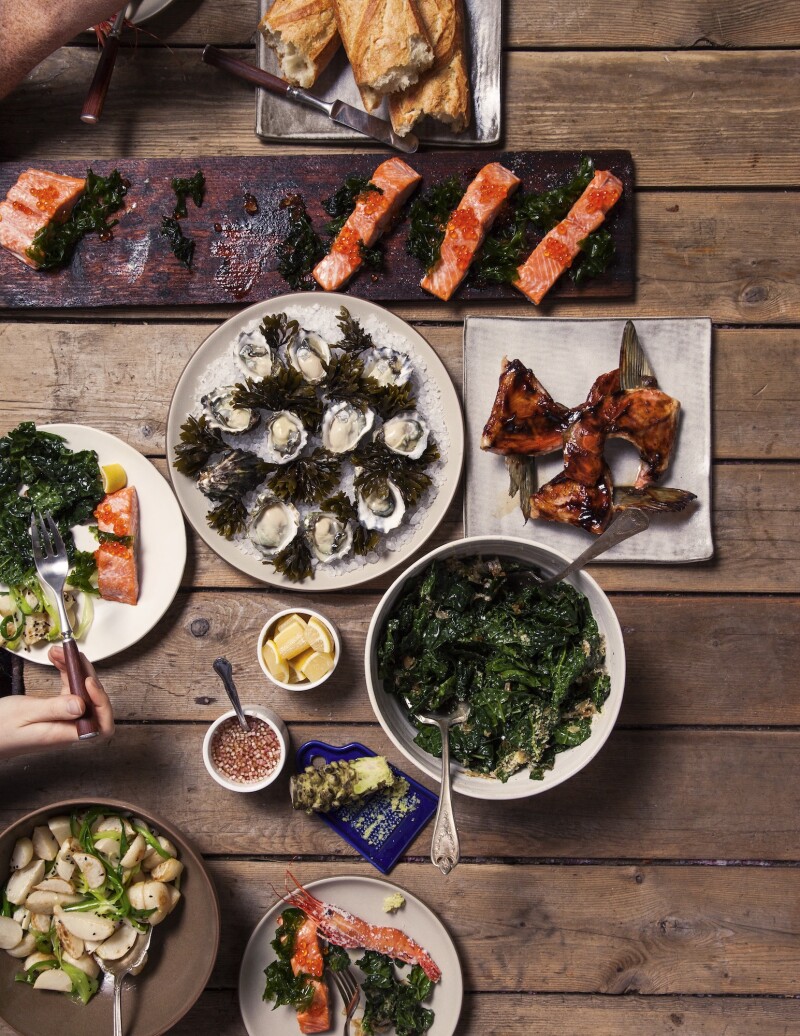
Locally foraged ingredients and products grown at small farms come together for a casual feast.
Photo by Kyle Johnson
The first thing you notice in the duo is this funny mix of deep confidence and deep mellowness. (“Sorry, guys, we’re out of sand dabs.” “Oh, right on!” Or: “Sorry, guys, I stole your car.” “Oh, right on!”) But a single-mindedness hums beneath the geniality. They were born to cook. Preisch grew up in his family’s 24-hour Cleveland diner, busing tables while in elementary school and cooking desserts from scratch in junior high. (“I worked from a young and illegal age.”) Stocks, for his part, had decided by sixth grade he’d attend the Culinary Institute of America. By the seventh he’d resolved to work for the French Laundry. By age 20 he’d done both.
In 2011, after steadily working his way up the restaurant ladder, Preisch got his big break. A modernist tavern called the Bent Brick was opening in Portland, and he was tapped to be the chef; Stocks came on, too, having worked with him previously. It was a dream, a blank slate onto which they could tweezer and sous-vide their refined modernist sensibility. I wish I knew the modernist term for disaster. Portlanders wanted burgers. They found avant-garde instead: foams, powders, a carrot prepared six ways. After the restaurant rebranded, the Portland Monthly declared the previous operation “confused,” referred to “conceptual experiments that clashed with the laid-back space.” Preisch and Stocks were ahead of their time, or in the wrong place—something. The details weren’t so important. Their big break nearly broke them.
When the situation was deemed unsalvageable, Preisch left, and so did Stocks—not just the Bent Brick but Portland altogether. “Another sign that the city might not be ready to embrace the forward-thinking cooking techniques sometimes called molecular gastronomy,” the Oregonian’s restaurant critic eulogized.
Stocks went to Chicago. Preisch went to Europe, on a kind of walkabout. “I wasn’t sure I’d come back,” he says.
There’s food trouble that results in journeys, and journeys that result in food trouble. In the 1850s, settlers reached Oregon and salivated at the sight of thick, plentiful forests lining the coast. They parked their ships and proceeded to damn near starve. Thanks to all those fallen conifer needles depleting the soil, all they could grow were potatoes. Meanwhile, a quick canoe ride away, indigenous communities were feasting on extraordinarily rich, diverse, and bountiful fare. If the settlers had simply gotten to know the landscape and its cycles, they could’ve eaten like kings.
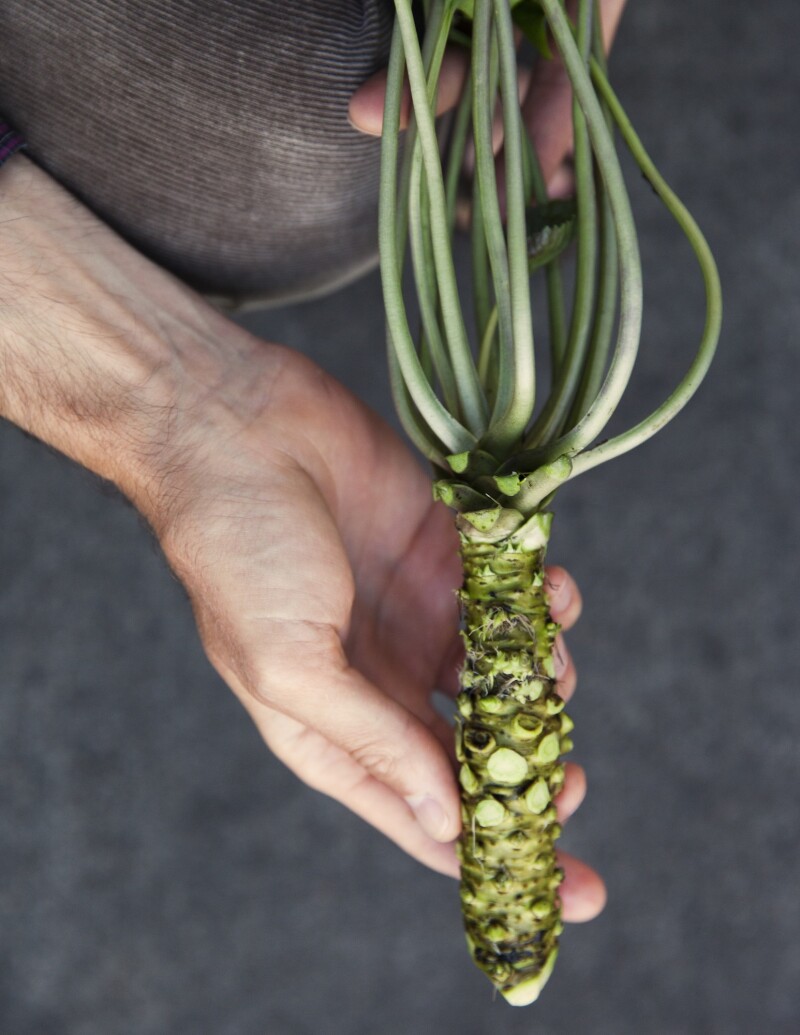
Frog Eyes Farm cultivates its wasabi in greenhouses. The rhizomes grow in gravel beds flooded with mountain stream water.
Photo by Kyle Johnson
I know this because, in the days before my trip, I phoned a cultural ecologist named Douglas Deur, author of Pacific Northwest Foraging, a guide to more than 120 wild edible plants. Deur teaches at Portland State University but lives in the woods of the north coast. As he explained it, the settlers’ disconnect from the land all around them reflected a deeper gulf.
“For the tribes, food procurement was woven into the fabric of life. Your social gatherings were your harvests, your fishing expeditions. Food gathering was enjoyable, and it gave life its coherence,” Deur said. Hearing this, I picture Preisch et al splashing around by the rocks. “The introduction of European traditions brought a fragmentation of experience that we still feel today. Work and play were—are—separate realms. With the tribes, gathering food and socializing and play was all one.”
Deur and I had been talking for a while, largely in historical terms, about the local pickings. He paused. “They also just taste good,” he added.
“There are times when I won’t eat lunch—I’ll just take a walk and eat as I go,” he said. “Certain types of wild violets, the flavor’s anywhere from wintergreen to a bowl of Froot Loops. Maybe throw in a few salmonberry shoots. I’ll feel perfectly full by the time I get home.”
Back to Preisch and his vague sojourn to Europe, future unclear. When Padberg heard that Preisch’s wander would take him through Sweden, Padberg insisted that his former Park Kitchen acolyte spend a little time with a former biology, chemistry, and math teacher named Roland Rittman, who lives in Anderslöv. If there’s such a thing as a celebrity gatherer of herbs and berries and mushrooms, Rittman is Beyoncé.
At the shore, hypnotized by surf and emptiness, it’s not hard to get caught up in the search.
“He looks like Santa Claus. That’s the first thing,” Preisch tells me, as we romp through tide pools. “The second thing is he has been running a B&B for a little more than forty dollars a night. An hour of foraging with him, meanwhile, costs three hundred and ten bucks.”
Through his approach to foraging, Rittman preaches a departure from industrialized food and a return to the natural and surprising. His sourcing was central to the character and success of Noma, the legendary Copenhagen restaurant frequently called the best in the world. Preisch came away from his tutelage changed.
“It’s the fantasy of a more adventurous life,” he tells me now, scooching down some rocks. “With coastal foraging, there’s this basic element of the unknown. There’s no official body of knowledge about all these edible plants.”
Preisch returned to Portland and, in 2013, began paying for time in KitchenCru, a shared, ambience-free commissary kitchen near the Pearl District. Stocks left Chicago to join him. The new vision would afford them culinary success on their own terms, meaning they could pay the bills, reap accolades, and even allow themselves meditative jaunts to the coast when other cooks would be cursing in their kitchens. Named for the rootlike mechanism a marine organism uses to grip whatever joyless substrate it calls home, Holdfast Dining quickly became Portland’s most popular underground restaurant.
On Friday, I’ll be a Holdfast diner. Whenever I’ve spent time with chefs, I’ve come away with admiration but not envy. I mean this in the nicest way, chef friends, but: Oh, god, what a horrible life you lead. Every evening spoken for, all those humans to manage, all that money not to make. Since launching, Holdfast has upended all that. It’s open just three nights a week. No lease, no waiters, no investors, no allergies accommodated, no fuss. Preisch and Stocks procure, prep, cook, serve, bus, and manage everything themselves. If they feel like making a 19-course dinner, they do.
Which sounds food-trucky in spirit. In fact, Holdfast is one of the city’s few fine dining operations. Seaweed gnocchi. Pork collar with gooseberries and burnt bay leaves. Celery root ice cream. Bone marrow custard. Pickled huckleberry. Everyone eats in a single seating, at a shared bar facing the kitchen. Reservations are made a month out, and filled in minutes.
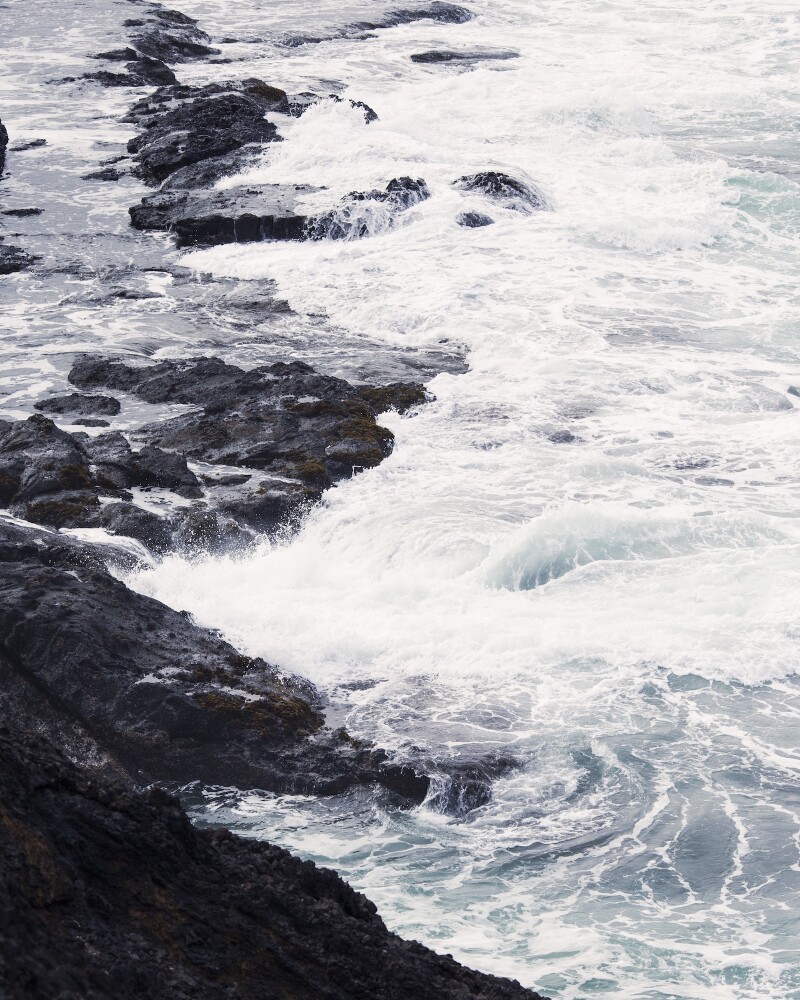
Holdfast Dining chefs go on regular culinary scavenger hunts in rocky tide pools.
Photo by Kyle Johnson
I’d love to attribute their good luck this time around to some cosmic force connected to their more adventurous life, or that coherence Deur spoke of. In truth, it’s probably just the capriciousness of the restaurant universe. Whatever the reason, the strains of the Bent Brick (since shuttered) are a world away. Their weekly drives to the coast for picking expeditions aren’t just about filling the larder. Thread the needle just so, and a tiny underground dinner can fan deeper dreams: the simpler existence, more itinerant gatherer, less rooted farmer. A reconnection with both our surroundings and our baser selves. “Kneel on the ground,” Rittman said at the MAD symposium, a gathering of chefs, in Copenhagen in 2013. “Humbly bend your head. Take a bite from a rooted plant. Graze as the animal you are.”
Graze, but also know that people like your dad will roll their eyes at this stuff.
It’s true. At the shore, hypnotized by surf and emptiness, it’s not hard to get caught up in the search—for the perfectly crisp sea beans, for the still-tender sandwort, a crunchy succulent almost oysterlike in taste. But ambling around Portland, I could hear the skepticism: Does the world need beach mustard? Isn’t coastal foraging just another quirky, trendy corner for the foodies to stake out?
Sure, of course. But, another voice in my head argues back, the foodies have merely picked up the dropped baton. Since the dawn of human history, we have been hunters and gatherers, doing exactly what Preisch and Stocks do, filling whatever gave rise to ziplock baggies. Historically speaking, quirkless industrial agriculture is the trendy new thing. Grabbing droopy cilantro at your neighborhood supermarket is a recent invention.
So come Friday night, I’m in the saddle, excited to taste the unknown at my first-ever Holdfast dinner. (The saddle itself was foraged, in a sense: In 1921, a freighter called the Canadian Explorer ran aground in Willapa Bay, Washington. Nearly a century later, wood salvaged from the wreck constitutes our long, communal table.) We dozen diners take our seats overlooking the rented kitchen where Preisch smiles, puts down his tweezers, and welcomes us.
And then it begins: nine courses, each a strange galaxy. Lamb, seaweed oatmeal, asparagus, sea beans. Prawn head, a rich and smoky dashi, truffle, and some bright, crisp sea lettuce that knifes through the dank, earthy flavors. Crunchy but creamy sweetbreads, pickled ramps, mustard greens, and black garlic, which somehow conveys both coffee and soy sauce, which somehow is wonderful.

A foraged sea supper from Holdfast Diner features scallop, turnip, apple, miso, and nasturtium.
Photo by Kyle Johnson
I find the level of detail remarkable—of course Preisch and Stocks can’t be flipping burgers. For one dish, they steep wasabi leaves and grate the rhizome into a mixture of cream and buttermilk, then set it with gelatin to form a wasabi panna cotta base. They then pour this around three raw bay scallops, seasoned with Jacobsen salt. The gel sets, and circles of wasabi leaves are cut out and laid atop the panna cotta. An apple gelée is then poured over it. Finally, they tweezer a medley of sea blight, sea purslane, sandwort, sheep sorrel, and sea spinach—some raw, some blanched—into the mix, along with some pickled apples.
“So you don’t have to get stoned to make this food?” an astonished diner to my right calls out to Preisch.
“We don’t have to.”
The evening stretches. I chat with the real estate agent next to me about the book he’s writing. I’m lost in the lardo and Parmesan and honeycomb and some Bandol rosé, and the book sounds grand. Then there’s a briny bite of something or other, and suddenly I’m right back on that beach outside Lincoln City.
I’d been a dutiful reporter, sticking close to Preisch and Stocks while we foraged at the coast. But at one point I’d wandered off, needing to stand alone in the funny cold Oregon sun. It was just a story about some food. But food had organized whole societies here, and for thousands of years. I glanced down. In my rumination I’d wandered ankle deep into an underwater thicket of laminaria, a dull green kelp when held aloft but an iridescent blue acid trip in water.
I couldn’t remember—was this one edible? Instantly deadly? I bent and ripped off a section. One bite and its crisp, marine brightness swept over me. I suppose it had an interesting flavor, but more than anything else it was simply alive, and it made me alive, too.
This article originally appeared online in December 2014; it has been updated to include current information.



